A low bounce rate indicates a website that engages readers, encouraging them to explore rather than turn to the competition. Your website must reduce the bounce rate to increase user experience, drive organic traffic and feature highly on search engine results.
But what is a bounce rate, how is it calculated, and how can you improve the bounce rate of your site? This article will discuss these questions and give you proactive tips for improving your bounce rate.
What is a Bounce Rate?
A bounce rate is the percentage of visitors who leave a website after only viewing one page. The average bounce rate for a website is around 40-50%.
Several factors, such as poor design, irrelevant content, or slow loading times, can cause a high bounce rate (70-80%). A low bounce rate (20-30%) is usually a sign that a website provides relevant and engaging content.
Why Bounce Rate Matters

The needs of popular search engines such as Google are constantly changing, but bounce rate appears to be a consistent factor considered when ranking websites. Websites that routinely rank on the first page of Google tend to have meagre bounce rates, indicating they’re providing quality, helpful content for their readers.
Perhaps even more significantly, a high bounce rate indicates that readers are leaving your page immediately and are not converting into genuine customers. Consider the goal of each page. It may be to drive customers to your shop, take them to a service page, or convince them to get in touch. If users are jumping directly from your site, you will not be reaping the rewards in sales and missing out on these potential leads as they go elsewhere.
What Should My Bounce Rate Be?
Unfortunately, this question is entirely context-specific. While a bounce rate of 80% is adequate for some industries, this may be disastrous for others.
You should be aware that where the traffic comes from will dramatically impact your bounce rate. Traffic reaching your website from paid advertisements or social media posts tends to have a significantly higher bounce rate. This is a legitimate reason for a high bounce rate and should not cause concern.
A bounce rate of 50% tends to be a figure many websites aim for, but this should be taken with a pinch of salt. It is always best to focus on improving your statistics rather than on what others are doing.
Be wary of bounce rates that are too low. On the surface, bounce rates of 20% look exceptional. However, these are usually the result of wrongly implemented Google Analytics tools rather than an exceptionally performing website.
How to Improve Your Bounce Rate
User Experience is Key
Firstly, you must consider whether your website’s content meets your readers’ needs. Think about how useful, interesting, and engaging your site’s substance is and how it will benefit your ideal visitor. Ensure that your design is modern, your images are slick, and your copy is exciting.
Users want to know that you are experts in the field and want to enjoy using your website. They do not wish to view vast blocks of text, which will immediately make them click away.
Short, snappy sentences work better.
Give the users the information they require without all the fluff surrounding it. Use infographics and photography to break up the text blocks, but ensure these graphics are relevant.
Videos are also a great way to engage users, keeping them on your website longer and helping reduce your bounce rate.
Easy Navigation
Whilst this might sound obvious, many websites fail to implement a user-friendly navigation system.
A concise, helpful menu that gives simple directions is essential for any great website. Users need it abundantly clear where to click to find the information they require. Additionally, having a search bar visible from every page on your site will encourage readers to remain rather than revert to their search engine.
This is especially true with WordPress sites, where many users purchase a template and stick with it. Ensure your WordPress set-up covers the basics, like a customised 404 Error page, add related or popular posts and include a WordPress search bar. Check for the basics, like no-follow links, meta titles and descriptions, and correct image formatting. These little changes on WordPress will make a big difference to the navigation.
Hiring an SEO agency for WordPress websites can help you find these errors and correct them.
Page Load Time
A website that loads quickly is crucial to excellent SEO and hugely benefits your website’s bounce rate.
Users are not willing to wait for buffering pages. The average internet user will click away in less than three seconds. Readers clicking away before the page has even finished loading will be catastrophic for your bounce rate.
Include More Calls to Action
If you are a service-based company, your website’s primary aim is to sell that service to your readers. Therefore, it is likely that you need to drive them to a contact page or, failing that, a newsletter subscription to keep them updated on your business.
Users probably find your website through a helpful blog post you uploaded rather than directly on your home page. Therefore, they might not even be aware of your company and the service you offer.
A call to action on every page will help drive them to another screen, converting them to genuine customers and keeping them on your website for longer. A successful CTA tells the reader what to do and leads them to do it immediately. Remember, readers won’t go hunting on your site to contact you – they’ll want it to be easy.
Use a Logical Internal Linking System
We all know the importance of internal links for your website ranking. It allows search engines to crawl your website and promote it for the most relevant user queries. However, it can also drastically improve your bounce rate.
Users are much more likely to continue reading when intuitive, sensible links are included.
Optimise Specifically
This is where the best-researched websites shine above the rest.
Besides specific keyword research, you should conduct a regular, thorough investigation into your target audience. Your website may not be reaching a readership that is converting into a genuine market.
This is where your bounce rate and an excellent overall SEO strategy tie together. You should look more widely at your SEO strategy, considering both your organic and paid-for advertising.
Optimised content will reach the best audience, which will keep them on your site and which will, in turn, reduce your bounce rate.
Consistently Update Your Blog
Regularly updating your blog with fresh, relevant content will hugely help to reduce your bounce rate.
Returning users will steadily begin to outweigh new visitors when readers begin to trust your posts and appreciate your content’s value. Returning users who come to your site directly are much more likely to browse for longer, helping to bring down the bounce rate.
ClickSlice: SEO for Reducing Bounce Rate
ClickSlice is an award-winning London SEO agency offering SEO strategies for businesses like yours that deliver results. We specialise in boosting the search engine rankings of company websites. We take an individualistic approach to SEO and work with businesses to develop a plan that works best for their specific situation.
For more information on how we transform businesses through the power of organic internet traffic, contact ClickSlice today at 020 3287 3638 or email us at hello@clickslice.co.uk.











